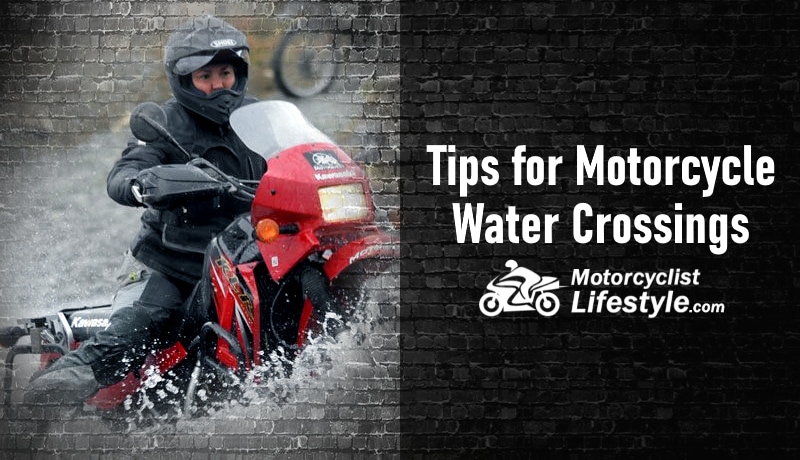If you ever find yourself in a situation where you have to do a water crossing to reach your destination, then make sure you figure out another way or go around it.
I know how much people love crossing water on a motorcycle but from my experience, you should try to avoid it. Water crossings can cause motorcycle damage and also cause injury during a crossing. But if you do have to cross creeks or maybe rivers, then you must be extremely cautious and take a few precautions before doing it.
So, let’s take a look at a few tips for crossing water on a motorcycle, which can help you to do it in a safe manner.
Top Tips for Crossing Water on a Motorcycle
Before crossing water, let your motorcycle cool down. Because the last thing you would want is your motorcycle with a hot engine in cold water.
So, let your motorcycle cool down and take a walk to check the depth of the crossing for deep holes, sand, clay, and submerged rocks. To measure the depth properly, you can use some stick or piece of long wood to test for the bottom surface.
See Also: How Do You Hold The Motorcycle Throttle?
Water always looks shallow but sometimes it isn’t. Sometimes, motorcyclists underestimate this and believe they know the crossing very well. But, remember a recent flood or a heavy rainfall may alter the depth, which makes it difficult to cross the water on a motorcycle.
On second thought, if it’s flooded then you should drop the idea of crossing. This is one thing that you can’t assume will go well. Flooding water is very unpredictable. You never know if the level is rising or how fast the water is flowing. Water has the capability to turn your motorcycle upside down. And here we are talking about unpredictable water in floods.
You can imagine, where this is going?
Even water at low velocity is enough to push or pull your motorcycle and throw you off the track in just seconds.
When you are crossing the water, make sure your feet are on the foot pegs and you are holding the handle tightly. Some people enjoy riding while crossing water and love it when the front tire gets high in the air and the water is spraying all around. But this is not the ideal way to cross water. If you slip, you won’t be able to recover from it.
Now, you also need to be prepared to de-drown your bike. Carry some spare parts like an oil filter, extra oil, and rags, etc. Plus, you will also require tools to remove the spark plug and air filter in case of an emergency.
Conclusion
Now, if you have understood these tips and precautions to take before water crossings, then you will probably stay out of trouble. And you will be able to avoid serious injuries. If you know of any particular tip or want to ask any questions, then don’t forget to mention them in the comment section below.

Leave a Reply